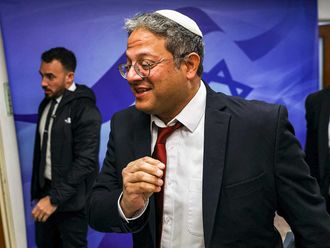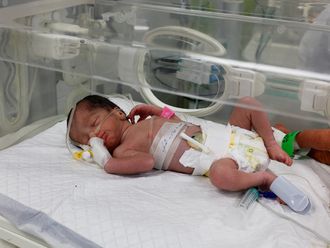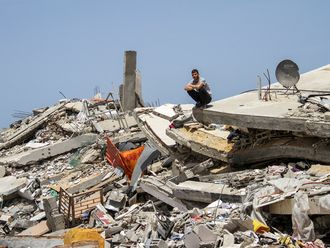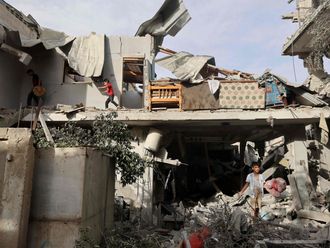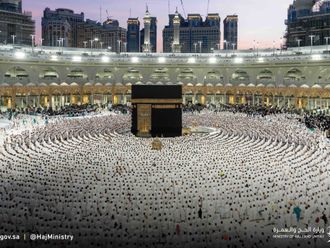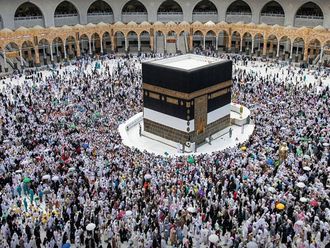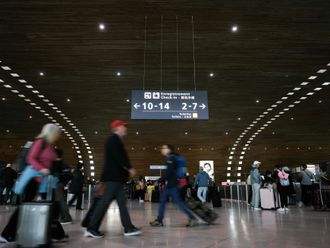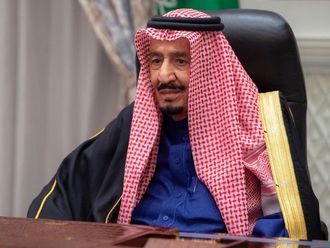_resources1_16a3106e402_medium.jpg)
Washington: The US military says it has started pulling equipment, but not troops, out of Syria as a first step in meeting President Donald Trump’s demand for a complete military withdrawal.
The Friday announcement fuelled concern about how quickly the US will abandon its Kurdish allies, amid contradictory statements recently by administration officials on an exit timetable.
The withdrawal began with shipments of military equipment, US defence officials said. But in coming weeks, the contingent of about 2,000 troops is expected to depart even as the White House vows to keep pressure on Daesh. Once the troops are gone, the US will have ended three years of organising, arming, advising and providing air cover for Syrian, Kurdish and Arab fighters in an open-ended campaign devised by the Obama administration to deal Daesh a lasting defeat.
Uncertainty over the timing and terms of the Syria pullout have raised questions about the Trump administration’s broader strategy for fighting extremism, including Trump’s stated intention to reduce US forces in Afghanistan this summer.
US air strikes against Daesh in Syria began in September 2014, and ground troops moved in the following year in small numbers.
The US military has a limited network of bases inside Syria. Troops work mostly out of small camps in remote parts of the country’s northeast. Also, US troops are among 200 to 300 coalition troops at a garrison in southern Syria known as Al Tanf, where they train and accompany local Syrian opposition forces on patrols to counter Daesh. Al Tanf is on a vital road linking Iranian-backed forces from Tehran all the way to southern Lebanon — and Israel’s doorstep.
Trump’s decision to leave Syria, which he initially said would be rapid but later slowed down, shocked US allies and angered the Kurds in Syria, who are vulnerable to attack by Turkey. It also prompted the resignation of Defence Secretary Jim Mattis and drew criticism in Congress. Sen. Jack Reed, a Rhode Island Democrat, called the decision a “betrayal of our Kurdish partners.”
The US military command in Baghdad, which is managing the counter-Daesh campaign in Iraq and Syria, said Friday that it “has begun the process of our deliberate withdrawal from Syria,” adding that, for security reasons, it would not reveal timetables, locations or troop movements. Other US officials later made clear that the pullout did not yet include troops.
The withdrawal plan, whose details are classified, includes bringing hundreds of additional troops into Syria temporarily to facilitate the pullout. These include troops to provide extra security for those who are preparing to leave. The full withdrawal is expected to take several months.
The USS Kearsarge amphibious assault ship is now in the region and could provide troops and equipment to support the withdrawal.
US troops are still working with a partner known as the Syrian Democratic Forces to stamp out the last Daesh holdouts in the Middle Euphrates River Valley near the Iraqi border. Trump has asserted that Daesh in Syria is defeated, but others have said a continued US military presence is necessary to prevent a resurgence of the group. Two weeks before Trump announced he was ordering a pullout, Gen. Joseph Dunford, chairman of the Joint Chiefs of Staff, said the US still had a long way to go in training local Syrian forces to stabilise areas ridden of Daesh. He said it would take 35,000 to 40,000 local forces in northeastern Syria to maintain security, but only about 20 per cent had been trained.
Another complication is the fate of hundreds of foreign Daesh fighters being held in Syria. The US doesn’t want these prisoners to be released once US forces are gone, since they could rejoin the militant cause in Syria or elsewhere.
There has been confusion over plans to implement Trump’s pullout order amid threats from Turkey to attack the Kurdish fighters, who are seen by Ankara as terrorists because of their ties to insurgents within Turkey.
On a visit to Turkish troops stationed near the Syrian border Friday, Turkey’s defence minister, Hulusi Akar, reiterated that Ankara is “determined” to fight Kurdish militias it considers terrorists and said military preparations were ongoing.
“When the time and place comes, the terrorists here will also be buried in the ditches and trenches they have dug,” he said.
Earlier this week, Trump’s national security adviser, John Bolton, said American troops will not leave northeastern Syria until Daesh is defeated and American-allied Kurdish fighters are protected, signalling a slowdown in Trump’s initial order for a rapid withdrawal.
In Cairo on Thursday, Secretary of State Mike Pompeo said that although Trump has decided to bring troops home, he will keep up the fight against Daesh more broadly.
“Let me be clear: America will not retreat until the terror fight is over,” Pompeo said.
The distinctive feature of the US military campaign in Syria is its partnership with the Kurds and Arabs who were willing to act as American proxies by fighting Daesh without US troops having to take the lead combat role. US forces took a similar approach in neighbouring Iraq, starting in 2014, but in that case, they had a willing partner in the Iraqi government, whereas in Syria, the US is present without the blessing of President Bashar Al Assad.
Syria also is complicated by the presence of Russian troops who are, in effect, propping up the Al Assad government, and by Iranian support for Al Assad. American and Russian warplanes have shared the skies over Syria, carrying out separate- and in some cases, conflicting — missions against Daesh and other targets.
The US has about 5,200 troops in Iraq to assist its security forces, and Trump has given no indication he intends to withdraw them any time soon. He has, however, asserted that the US must bring an end to the Mideast wars that began after the September 11, 2001, terror attacks. He has questioned the wisdom of continuing the 17-year war in Afghanistan and recently demanded that about half of the 14,000 US troops there be sent home.


